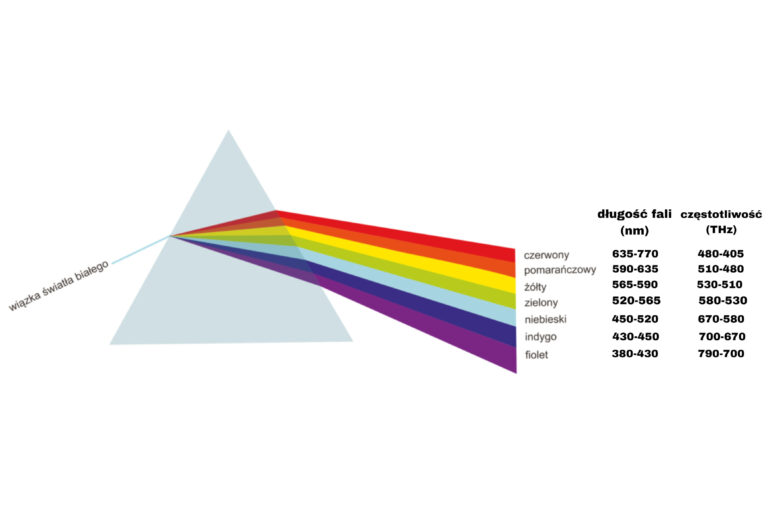Light is energy waves with different frequencies.
Goethe wrote that light is “the simplest, indivisible, and most unified being we know.”
“Confronting him is darkness.”
He used to say that on the way between darkness and light we traverse the spectrum of colors.
Light, sharing existence with darkness, acquires properties known as colors.
Color is light split into waves of different frequencies.
The body that completely absorbs the radiation falling on it is perfectly black.
However, in the real world it is difficult to find a perfectly black body.
The colors that characterize given objects are created as a result of a partial reflection of light falling on them.
In contrast to the black body, the body reflecting the radiation falling on it is referred to as white.
Color is a vibrating light wave of a given frequency.
Colors differ from each other in a higher or lower frequency, which is responsible for the sensation of heat or cold.
Yellow and bordering it are identified with light (feeling of heat).
Blue, on the other hand, and its neighbors are attributed to darkness (feeling cold).
For comparison, the largest wavelength and at the same time the lowest frequency has the color of red, while purple has the shortest wavelength, and at the same time the highest frequency.
High frequencies are responsible for the feeling of cold.
Low frequencies give a feeling of warmth.

Blind people are able to distinguish colors by sensing other frequencies through touch.
Extremely sensitive to the frequencies of waves, people, not necessarily blind, can see colors without the help of their eyes.
Colors are able to evoke sharpened sensations in them.
For example, red can burn, orange – warm, yellow is lukewarm, green is neutral, while blue pinches cool.